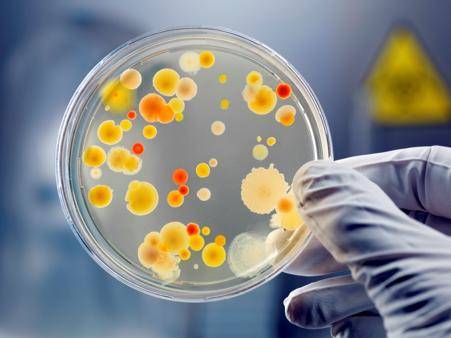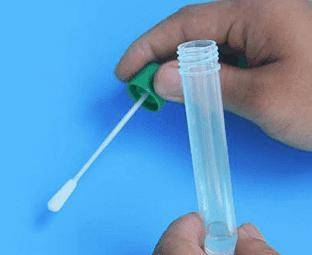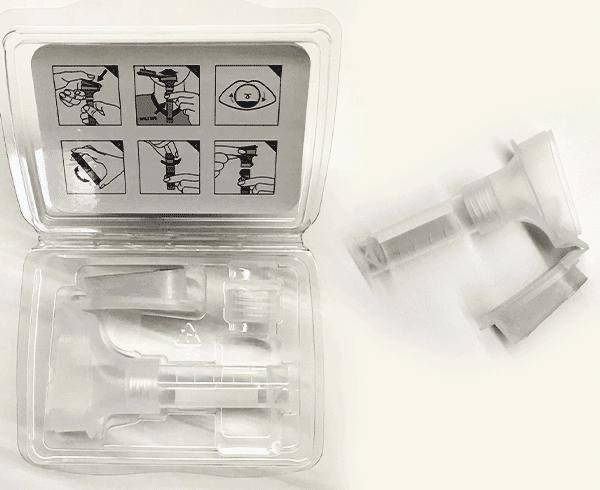As high-throughput sequencing technologies advance swiftly, our comprehension of microbiota undergoes continual refinement. Microbial sequencing spans across an array of samples, ranging from the soils perched atop towering peaks to the sedimentary layers on the ocean floor's abyss. This diversity enables the investigation of microbial impacts on environmental fluctuations and the deciphering of physiological enigmas inherent in diverse organisms. To attain meaningful sequencing results, strict adherence to standardized procedures for sample collection and submission is paramount—a fundamental prerequisite for the success of research initiatives.

Before submitting samples for sequencing, it is crucial to consider the following points:
Sterilization of Sampling Tools and Containers: Ensure that the tools and containers used for sampling have undergone proper sterilization.
Timely Labeling and Record-Keeping: Immediately label the samples after collection and maintain detailed records of relevant sampling information.
Sample Backup Prior to Submission: Create backups of the samples before submission to safeguard against unforeseen circumstances that may lead to the loss of valuable specimens.
Utilization of Standard Containers for Sample Submission: Use standard containers for submitting samples, ensuring clear and accurate labeling. Avoid excessive sample quantities during submission.
Maintaining Low-Temperature Conditions during Shipment: During shipment, maintain a low-temperature environment. It is recommended to use dry ice for shipping.
Attention to these details is essential to guarantee the integrity and successful analysis of the samples in the context of microbial sequencing.
For different types of environmental samples, the recommended sample submission methods are as follows:
Environmental Samples:
(1) Soil or Sediment:
Collect 5-10g of soil, removing surface debris.
Extract soil from a depth of 5-10cm, combining samples from at least three collection points for each specimen.
Place the composite sample in sterile centrifuge tubes.
Transport the samples back to the laboratory at temperatures below 0°C and store at -80°C.
For sediment samples with higher moisture content, collect a minimum of 50g.
It is advisable to use containers not exceeding 15mL centrifuge tube size for soil samples.
(2) Water:
Use 0.22µm or 0.45µm filter membranes for filtration.
Filter water volumes ranging from 5-10L, with an optimal filter membrane area of 3-4cm.
Store the filter membrane at -80°C.
Avoid direct shipment of challenging-to-open containers such as filter holders, as it may complicate sample retrieval during experiments and could impact project timelines.
For original water samples, it is recommended to ship in 50mL centrifuge tubes. If the water sample exceeds 50mL, kindly filter it yourself and send the filter membrane.
Plant Samples:
(1) Rhizosphere Microbiota:
Collect rhizosphere soil from a depth of 20cm and place it in sterile 50mL tubes.
Sieve the soil through a 20-mesh sieve to remove plant roots, animal remains, and other impurities.
Place 3-5g per tube, seal immediately, and flash-freeze in liquid nitrogen.
(2) Leaf Surface:
Collect 50-100g of plant material and wash with sterile water.
After washing, filter the sterile water through a membrane filter, preserving the filter membrane at -80°C.
(3) Endophytic Microbes:
Use PBS to remove surface bacteria.
Cut the plant tissue, releasing endophytic microbes.
Place the plant material in water with glass beads and agitate.
Filter the suspension through a 5µm filter membrane.
Centrifuge the filtrate (15000rpm, 4°C) to collect microbial precipitate.
Collect the microbes in imported cryotubes and store at -80°C.
Due to the susceptibility of endophytic microbes to host cell contamination, extracted nucleic acids may contain a significant amount of host DNA. Careful measures should be taken to address potential host contamination during the nucleic acid extraction process.
Fecal and Intestinal Samples:
(1) Human Fecal Samples:
Collect approximately 3g (about the size of a soybean) of fecal material.
To avoid contamination, it is recommended to discard urine and use a sterile spoon to collect internal samples from the feces.
(2) Mouse Fecal Samples:
Collect 0.5g (3 pellets) of fecal material from mice.
Place mice in a clean cage lined with disinfected filter paper, and collect fecal samples immediately after defecation.
Use fresh filter paper for each mouse to prevent cross-contamination.
After collecting the samples, promptly place them in imported cryotubes and flash-freeze in liquid nitrogen. Subsequently, store them at -20°C, and for long-term storage, transfer them to -80°C. It is recommended to ship fecal samples in tubes containing protective solution to preserve sample integrity during transportation.

(3) Intestinal Contents: For the collection of intestinal contents:
Use a sterile surgical knife to make a longitudinal incision along the digestive tract.
Retrieve the contents of the digestive tract and place them into imported cryotubes.
Immediately flash-freeze the samples in liquid nitrogen and store them at -80°C.
For large or medium-sized animals such as cattle, sheep, large rats, and rabbits, collect 200-1000mg per sample. For small animals like mice, collect 200-500mg per sample. For animals with limited intestinal contents, such as fish and shrimp, collect at least 100mg per tube.
Oral samples
(1) Saliva:
Utilize a designated saliva collector.
Instruct the individual to expectorate saliva into the collector 2-3 times (approximately 1mL per spit).
Add DNA stabilizer to the collected saliva.
Transfer the mixture to imported cryotubes, promptly freeze in liquid nitrogen, and submit for analysis.
(2) Dental Plaque:
Place dental floss between adjacent teeth to collect interdental plaque.
Use a sterile cotton swab to collect plaque from the occlusal surface of posterior teeth.
After collection, place the samples into sampling tubes containing a preservative solution.
Rapidly agitate for 30 seconds, and the samples can be shipped at room temperature.
 Saliva DNA Collection Device
Saliva DNA Collection Device
Tissue samples
(1) Intestinal Mucosa:
Select segments from different parts of the intestine.
Vertically incise the intestinal segment opposite to the mesentery to expose the intestinal lumen.
Use a sterile sampler to collect samples from the intestinal content, storing them separately.
After cleaning the intestinal content, rinse the intestinal lumen with sterile saline to remove visible intestinal contents (to avoid disturbing the mucosa).
Gently scrape the intestinal mucosa with a sterile glass slide (avoiding penetration of the basement membrane).
The sample size should be approximately the size of a fingernail (about 0.8cm * 0.8cm).
Preserve the samples in imported cryotubes, rapidly freezing with liquid nitrogen, and store at -80°C.
(2) Gastric Tumor:
Employ methods such as the ruminal fistula technique, insertion of a gastric tube via the mouth or nose, or puncture methods to collect gastric content.
After passing through four layers of sterile gauze for filtration, collect the gastric fluid and store it at -80°C.
(3) Blood:
Wipe the venipuncture site with 70% alcohol and wait for at least 60 seconds.
Perform venipuncture and draw 2 mL of whole blood into an EDTA anticoagulant tube.
Invert the anticoagulant tube 8-10 times to thoroughly mix the EDTA and whole blood, ensuring effective anticoagulation.
Store at -20°C.
(4) Skin:
Refrain from bathing 24 hours before sampling, and avoid using moisturizers or antibacterial soaps.
Select an area approximately 4 cm * 4 cm (about the size of six thumbnails) for sampling.
Gently scrape the surface of the skin using a sterile surgical blade.
(5) Urine Samples:
Collect fasting, fresh morning urine, with or without hematuria.
Females should avoid sampling during menstruation and prevent vaginal secretions from contaminating the urine.
Collect a suitable amount of random midstream urine, preferably 3 mL or more, and store by rapid freezing in liquid nitrogen.
(6) Reproductive Tract Samples:
Avoid sexual activities within 48 hours and refrain from altering the microbial structure, such as private area cleaning or medication use, within 30 days.
Use a sterile cotton swab to sample adequately, immerse it in 2 mL of PBS solution in an imported cryotube, discard the swab, and rapidly freeze in liquid nitrogen.
Due to the difficulty of obtaining tissue samples, ensure to use dry ice for shipping when sending out tissue samples.
Other Sample Types:
(1) Surface Microbiota on Objects:
Place the object in a sterile container, add an appropriate amount of PBS to submerge the object.
Utilize equipment such as a shaker to rotate and shake, dislodging surface microbiota from the object.
Collect the water sample, perform low-temperature high-speed centrifugation, and collect the precipitate in an imported cryotube.
Store at -80°C.
(2) Fermented Foods:
Determine the sample volume based on experimental design considerations.
Due to the unique nature of fermented foods, the sample should be packaged in a sterile, sealed container.
Store at -80°C.
Summary:
Ensuring standardized sampling and delivery practices is crucial for maintaining the quality of samples, ultimately guaranteeing desirable outcomes in subsequent extraction, library construction, and analysis phases.
In the realm of microbiological research, CD Genomics provides comprehensive services encompassing microbial diversity, metagenomics, and metatranscriptomics sequencing analyses:
Population Diversity: Primarily conducted through 16S/18S/ITS sequencing, this approach delves into the types and abundance of microbial communities within samples. It facilitates the comparison of inter-sample differences and significance at the population level, offering insights into variations among samples.
Functional Diversity: Leveraging metagenomic or metatranscriptomic sequencing, this service explores gene types, abundance, and expression differences within samples. It investigates microbial community evolution, microbial-environment interactions, and microbe-host relationships, unveiling and studying novel functional genes.
Integrated Multi-Strategy Analysis: By combining 16S/18S/ITS sequencing, metagenomic sequencing, metatranscriptomics sequencing, and metabolomics, a comprehensive exploration is achieved. This not only reveals microbial types and population structures but also deeply investigates the connections between function and gene expression. Furthermore, it enables the study of microbial responses to environmental changes at the metabolic level.
Single Microbial Species Sequencing: Tailored for cultivable microbes, this service employs bacterial whole-genome sequencing or fungal fine-mapping to decode species genomes, providing insights into the associated functionalities of the species.
For research purposes only, not intended for clinical diagnosis, treatment, or individual health assessments.


 Sample Submission Guidelines
Sample Submission Guidelines



